Q&A: Ullo, Ghana Site Visit

Design Engineers’ collaboration with Engineers Without Borders at Iowa State University and Kwame Nkrumah University of Science and Technology on their latest project has reached fruition. The project, a solar water heater for the local high school, was funded through the ASHRAE Decarbonization Challenge. In May, Managing Principal Dwight Schumm and Mechanical Engineer Sam Stinson were able to visit the site during construction. Sam Stinson tells us more about the project, key takeaways, and the overall adventure of the trip.
Remind us, Sam, how did this project come together? Give us the who, what, and why of this project.

Sam: Right! So, the “who” of this project is based in a partnership formed with the student chapter of Engineers Without Borders at Iowa State (ISU-EWB) in the fall of 2023. This group has done projects around the world for years, but over the past decade has formed a relationship with a community called Ullo in northwest Ghana. Ironically, in one of their latest projects, the Ullo Clinic, the students found themselves stuck on the MEP design. So, we reached out and said “Hey! We’re experts in that field and would love to help.” And we got such an enthusiastic response that to this day we continue to help their mission through volunteer efforts on MEP design, like this latest effort on the solar water heater.
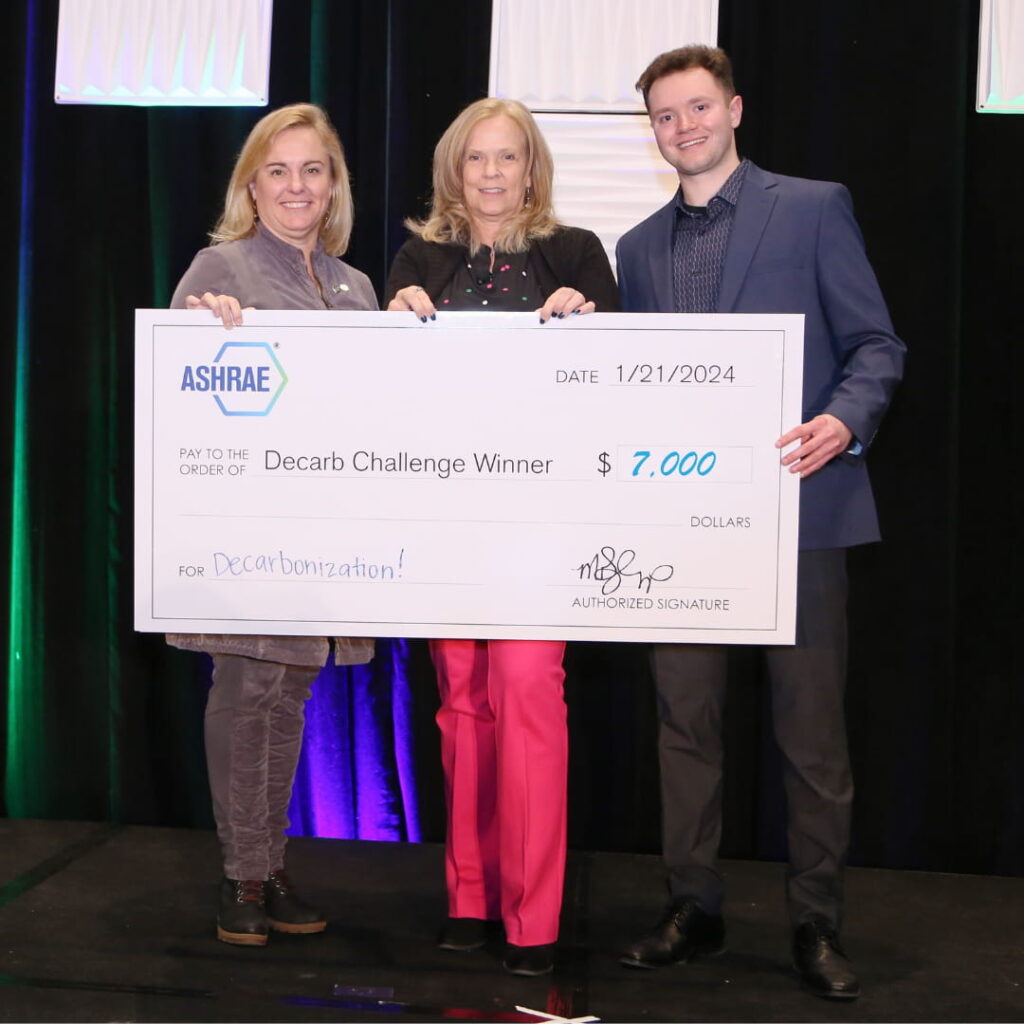
The “what” and I’ll also add in “how” of this solar water heater was tied to the ASHRAE Decarbonization Challenge. Once we had established this connection with ISU-EWB and the community in Ghana, one of our Mechanical Engineers, Darrow Center, learned of this decarbonization challenge that ASHRAE was rolling out. This was really an effort to incentivize local chapters to do projects that are related to sustainability. So, we said to ourselves, “We need to find a way to incorporate this into our work with Engineers Without Borders!”
The premise of the ASHRAE Decarbonization Challenge was that it needed to be completed within the next six months—an impossible timeline for the Ullo Clinic project.
That’s when we turned our focus to the local high school.
We learned from the ISU-EWB students and the local community that Ullo Senior High School, just a short walk from the clinic, had a kitchen that uses wood-burning stoves daily to heat large amounts of water for school meals. We learned these stoves cause many negative effects on the health of the cooks and have led to financial stress and local deforestation to obtain firewood. So, as part of the ASHRAE Decarbonization Challenge, we proposed to install a solar water heating system for the kitchen, to relieve some of those effects. And we were awarded a 7,000-dollar grant by ASHRAE to fund the project! We spent the spring months designing that system and this past May was the ultimate implementation phase, where Dwight and I traveled with students and professors to assist the community in Ghana with installing the system.
The “why” for all of these efforts was truly born out of a shared passion among Design Engineers coworkers and students to do good in the community. For Design Engineers specifically, we learned through our volunteer work with Habitat for Humanity as part of our 40th anniversary celebration that we wanted to find a way, as engineers, to leverage our expertise in building design toward community development work. And so, when we found Engineers Without Borders had a need for MEP design expertise, it seemed like the stars just aligned for all of us! It’s been awesome to see that as a company, we can create community-based impact for both a Habitat house five miles from work and a school 5,000 miles away!
What were some of the goals behind taking the step to get on a plan and travel 5,000+ miles for a site visit?
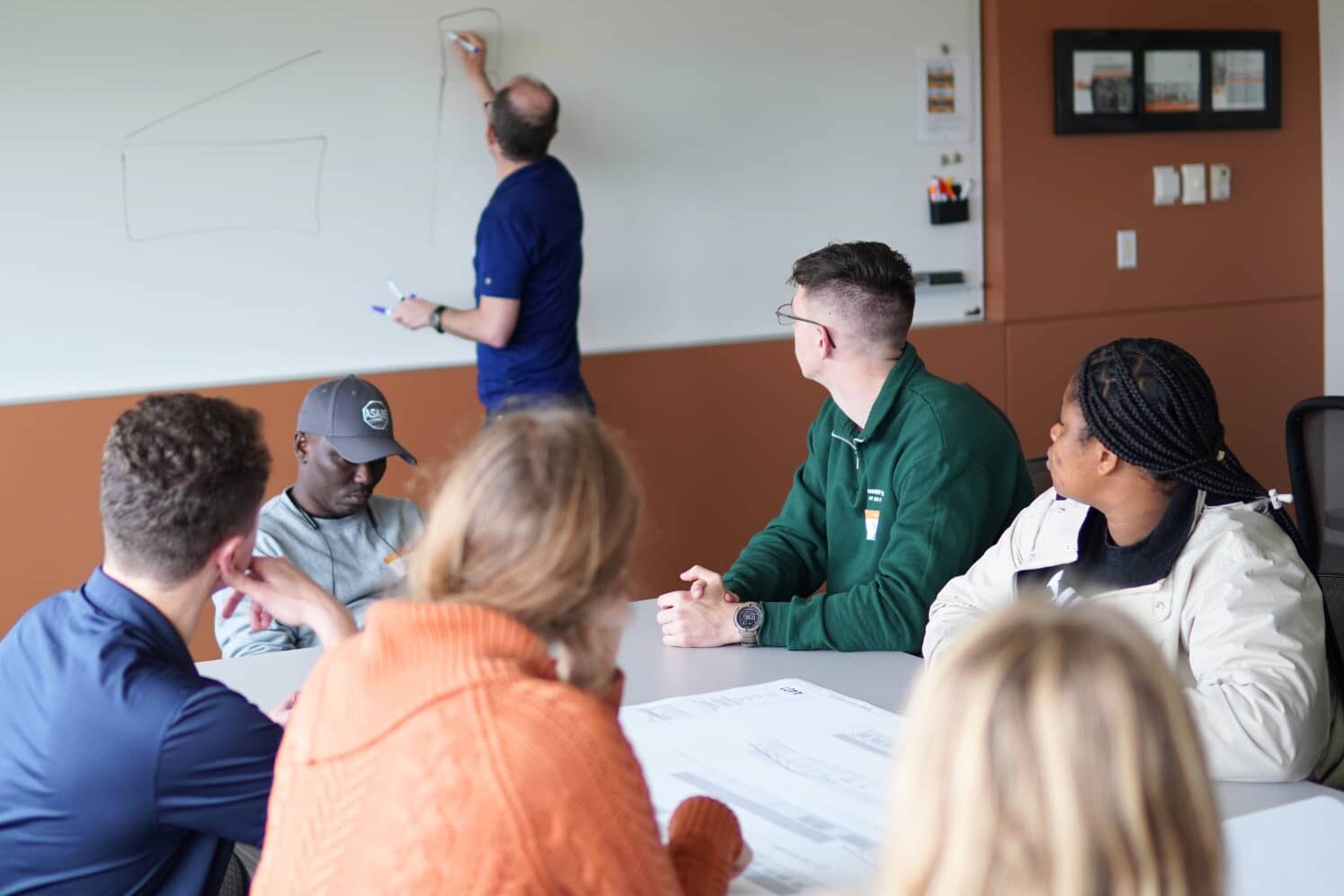

Sam: Yes, 5,000 miles for a site visit seems far! And, while yes, the obvious goal was to be present for the installation of the solar water heating system that we had designed throughout the spring with ISU and Kwame Nkrumah University of Science and Technology (KNUST), we also saw many long-term benefits to our relationship with the community by making the visit. From our perspective at DE, the site visit was an important chance to see how things are done in Ullo and how our knowledge from engineering systems here in the Midwest can relate to projects in Ghana. For example, while in Ullo, we had a chance to tour some local clinics, meet some plumbers and discuss ideas for our other ongoing project, the Ullo Clinic. We were really able to see how we could contribute our expertise and foster that relationship we started with the community and students. Because for us we want these projects…the clinic, the solar water heater…to be the tip of the iceberg in a long and rewarding partnership across organization, community, and country.
What challenges did you face and how did you overcome them?

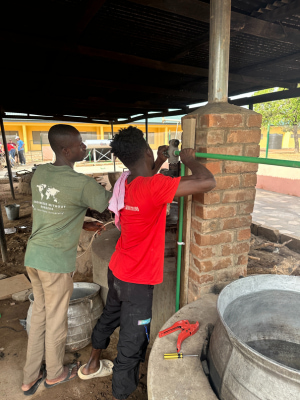
Sam: The learning experience of being in person in Ullo obviously brought on a lot of challenges. We quickly learned that many things we utilize locally are different. Whether it’s local materials—for example, it’s common for their domestic water piping to be a plastic material called “PPR” instead of copper and to be sized in metric units, or just basic terms for different types of fittings and accessories that were used in the system—these differences made for some head-scratching moments. However, the differences made for an awesome learning experience and contributed to the problem-solving attitude we all embodied over the trip. At any point in the trip, we could be on site with local volunteers going back and forth on an issue and having a tough time trying to find a certain part or material to solve a problem, only for us to eventually realize that we were all talking about the same thing! I came to realize these “ah-ha” moments, when everybody would get excited, added so much fulfillment and fun to the problem-solving process!
Describe the trip in one word and tell us why.

Sam: For me, our trip centered around collaboration. There’s this term in biology, called mutualism, where species will work together in the environment and benefit one another. I feel like this phenomenon in nature is a great metaphor to illustrate the type of collaboration we were experiencing. The whole trip behaved like a symbiotic relationship, where we were learning from and benefiting the students who were learning and benefiting the community who were learning and benefiting. We were a variety of parties that all came together, seemingly very different, and yet everyone was taking something away from it!
What were the immediate benefits observed? How does this project help the Ullo community long-term?

Sam: One of the immediate benefits we anticipated and saw was improving the high school’s cooking process. The local cooks arrive very early in the morning to boil large pots of water – our hope was that preheated water from the solar heater would speed up the boiling process and give them time back in the morning. The cooks really are integral to the function of that school, and so I think improving their lives with this system is going a long way. Plus, reducing the need for fire, we also hoped to diminish the amount of smoke inhalation for those in the kitchen.
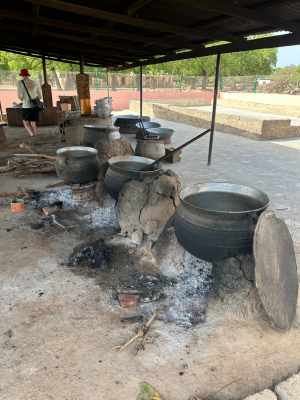
From a decarbonization standpoint, the immediate impacts are to reduce the amount of firewood they use in the wood-burning stoves. This will alleviate the financial strain caused by buying and transporting wood and reduce local deforestation to locally source wood. Now that it has been several months since installation, the initial feedback that we’ve received from the community is that this reduction of firewood and improved kitchen process have been a real and a much-needed improvement!
In the longer-term, one of the things we learned from this trip is that these water heaters are quite a novel technology for the Ullo community compared to the more urban areas. When we were installing the solar water heaters, we noticed a crowd formed around the perimeter of the fence of the school. There was a buzz in the community and the school administrators noted that this was a great thing for the school to showcase for visitors, as it’s right in the front of the entrance. In their eyes, it shows that their school is innovative and forward thinking!
Also, a driving incentive of the ASHRAE Decarbonization Challenge is how this system can be scalable for future work in the community. I think one thing the community is excited about is that their next project is to complete the local clinic that can support a lot of their other needs. They’re thrilled that they can hopefully use a similar water heating system now at the clinic. In a sense, this project was kind of like a pilot system for the community to become familiar with the technology and see how it works before applying it at a large scale at the clinic. It’s a great feeling to know that in the coming years, we could very well be back here again. And this time we wouldn’t just be installing a solar water heater but assisting with the construction of the community clinic!
What did this project and site visit reveal to you?

Sam: What really opened my eyes was the power of working with students. I loved the enthusiasm that they brought to the team. Working with the Ullo community was amazing enough, but to also work on it with students made it that much more rewarding. Helping them feel involved and know that they were contributing to both the future of Ullo and our industry was awesome. And I think they felt incredibly empowered and inspired by working with professionals. Our collaboration and support made them feel assured of what they were doing and were able to see a path forward in their work. You could see their mindset shift to “OK, if I learn these things, I can make a really big impact!” It’s extremely gratifying for me to see how excited they are now to keep up the good work, do more projects with Engineers Without Borders, and hopefully go into the industry and have an impact there as well.
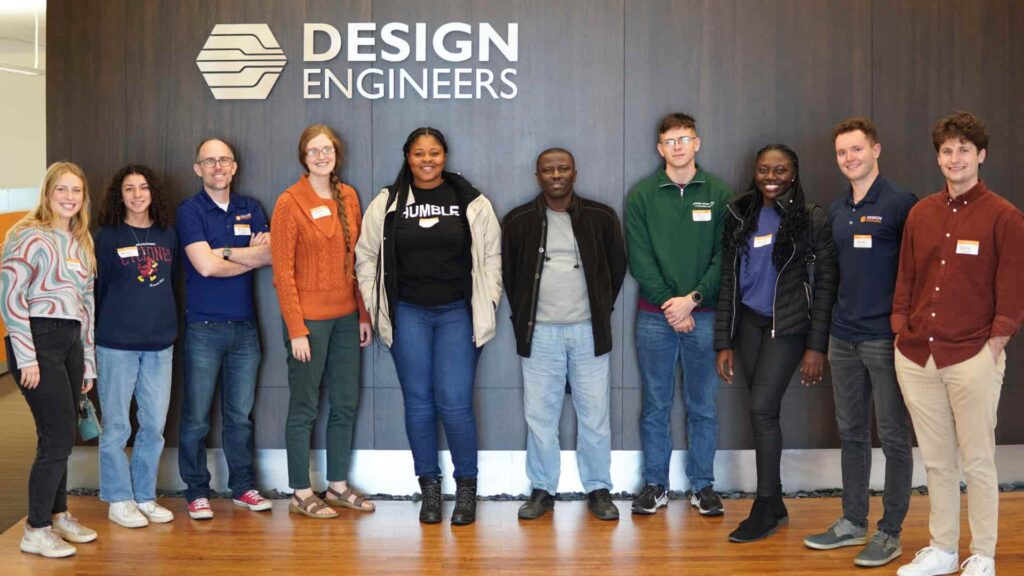
Continuing A Partnership of Innovation and Collaboration
Design Engineers’ site visit to Ullo, marked by collaboration, problem-solving, and cultural and organizational exchange, has been an incredible journey that has only started. To learn more about the ASHRAE Decarbonization Challenge which helped fund the solar water heater and see a list of 2023-2024 winners, visit the ASHRAE website or our blog Design Engineers Team Wins at ASHRAE’s 2023 Decarbonization Challenge. Additionally, to learn about the ongoing efforts to build a medical clinic in Ullo, check out our blog Nonprofit Work Fosters Collaborative Engineering Abroad and Back Home.


